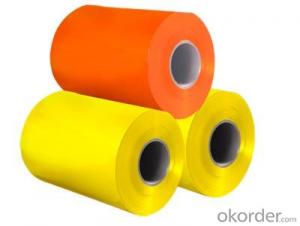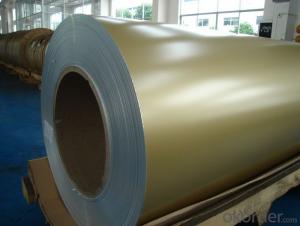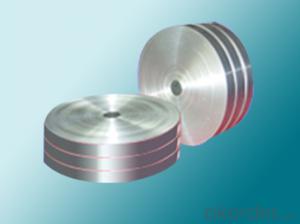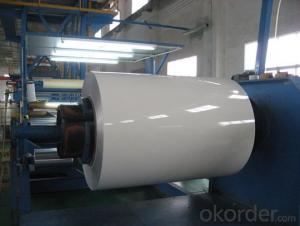RAL 9016 PE 18 Micros Coated Aluminum Coils Inc Tampa FL
- Loading Port:
- Tianjin
- Payment Terms:
- TT OR LC
- Min Order Qty:
- 2 m.t.
- Supply Capability:
- 40000 m.t./month
OKorder Service Pledge
OKorder Financial Service
You Might Also Like
Specification
Description
Grade
| 1000 Series: 1050 1060 1070 1100 1200 1235 etc. 3000 Series: 3003 3004 3005 3104 3105 3A21 etc. 5000 Series: 5005 5052 5083 5086 5154 5182 5251 5754 etc. 6000 Series: 6061 6063 6082 6A02 etc. 8000 Series: 8006 8011 8079 etc. |
Thickness | 0.05~10mm |
Width | <1600mm< span=""> |
Color | Metallic, Solid, RAL or by customer requirements |
Coating paint: | PVDF(Polyvinylidene Fluoride), PE(Polyester ) |
Coating thickness | as per customer’s request |
Gloss | 10-90%(EN ISO-2813:1994) |
Total coating thick | Polyester18~27micron(EN ISO-2360:1995) PVDF27 ~35micron(EN ISO-2360:1995) |
Coating hardness | 2H |
Protective film | PVC film, Colorless transparent or White-black |
Adhesion | 5B (EN ISO-2409:1994) |
Impact resistance | No cracking and peeling (A.S.T.M D2794-1993) |
Flexibility (T-bend) | 0T- 2T |
Temper | H16, H18, H24, H26, H26 |
Certification | ISO9001:2000, CE, SGS |
Coil's standard diameter | 1100mm |
Inner Diameter | 405mm/505mm |
Coil's standard weight | 2000kgs |
Payment | L/C ,T/T |
Chemical composition% | |||||||||
Grade | Si | Fe | Cu | Mn | Mg | Cr | Ni | Zn | Al |
1050 | 0.250 | 0.400 | 0.050 | 0.050 | 0.050 | - | - | 0.050 | 99.50 |
1060 | 0.250 | 0.350 | 0.050 | 0.030 | 0.030 | - | - | 0.050 | 99.60 |
1070 | 0.200 | 0.250 | 0.040 | 0.030 | 0.030 | - | - | 0.040 | 99.70 |
1100 | Si+Fe:0.95 | 0.05-0.2 | 0.050 | - | - | 0.100 | - | 99.00 | |
1200 | Si+Fe:1.00 | 0.050 | 0.050 | - | - | 0.100 | 0.050 | 99.00 | |
1235 | Si+Fe:0.65 | 0.050 | 0.050 | 0.050 | - | 0.100 | 0.060 | 99.35 | |
3003 | 0.600 | 0.700 | 0.05-0.2 | 1.0-1.5 | - | - | - | 0.100 | remains |
3004 | 0.300 | 0.700 | 0.250 | 1.0-1.5 | 0.8-1.3 | - | - | 0.250 | remains |
3005 | 0.600 | 0.700 | 0.250 | 1.0-1.5 | 0.20-0.6 | 0.100 | - | 0.250 | remains |
3105 | 0.600 | 0.700 | 0.300 | 0.30-0.8 | 0.20-0.8 | 0.200 | - | 0.400 | remains |
3A21 | 0.600 | 0.700 | 0.200 | 1.0-1.6 | 0.050 | - | - | 0.10 | remains |
5005 | 0.300 | 0.700 | 0.200 | 0.200 | 0.50-1.1 | 0.100 | - | 0.250 | remains |
5052 | 0.250 | 0.400 | 0.100 | 0.100 | 2.2-2.8 | 0.15-0.35 | - | 0.100 | remains |
5083 | 0.400 | 0.400 | 0.100 | 0.40-1.0 | 4.0-4.9 | 0.05-0.25 | - | 0.250 | remains |
5154 | 0.250 | 0.400 | 0.100 | 0.100 | 3.1-3.9 | 0.15-0.35 | - | 0.200 | remains |
5182 | 0.200 | 0.350 | 0.150 | 0.20-0.50 | 4.0-5.0 | 0.100 | - | 0.250 | remains |
5251 | 0.400 | 0.500 | 0.150 | 0.1-0.5 | 1.7-2.4 | 0.150 | - | 0.150 | remains |
5754 | 0.400 | 0.400 | 0.100 | 0.500 | 2.6-3.6 | 0.300 | - | 0.200 | remains |
6061 | 0.40-0.8 | 0.700 | 0.15-0.40 | 0.150 | 0.8-1.2 | 0.04-0.35 | - | 0.250 | remains |
6063 | 0.20-0.6 | 0.350 | 0.100 | 0.100 | 0.45-0.9 | 0.100 | - | 0.100 | remains |
6082 | 0.7-1.3 | 0.500 | 0.100 | 0.40-1.0 | 0.6-1.2 | 0.250 | - | 0.200 | remains |
6A02 | 0.50-1.2 | 0.500 | 0.20-0.6 | Or Cr0.15-0.35 | 0.45-0.9 | - | - | 0.200 | remains |
8011 | 0.50-0.9 | 0.6-1.0 | 0.100 | 0.200 | 0.050 | 0.050 | - | 0.100 | remains |

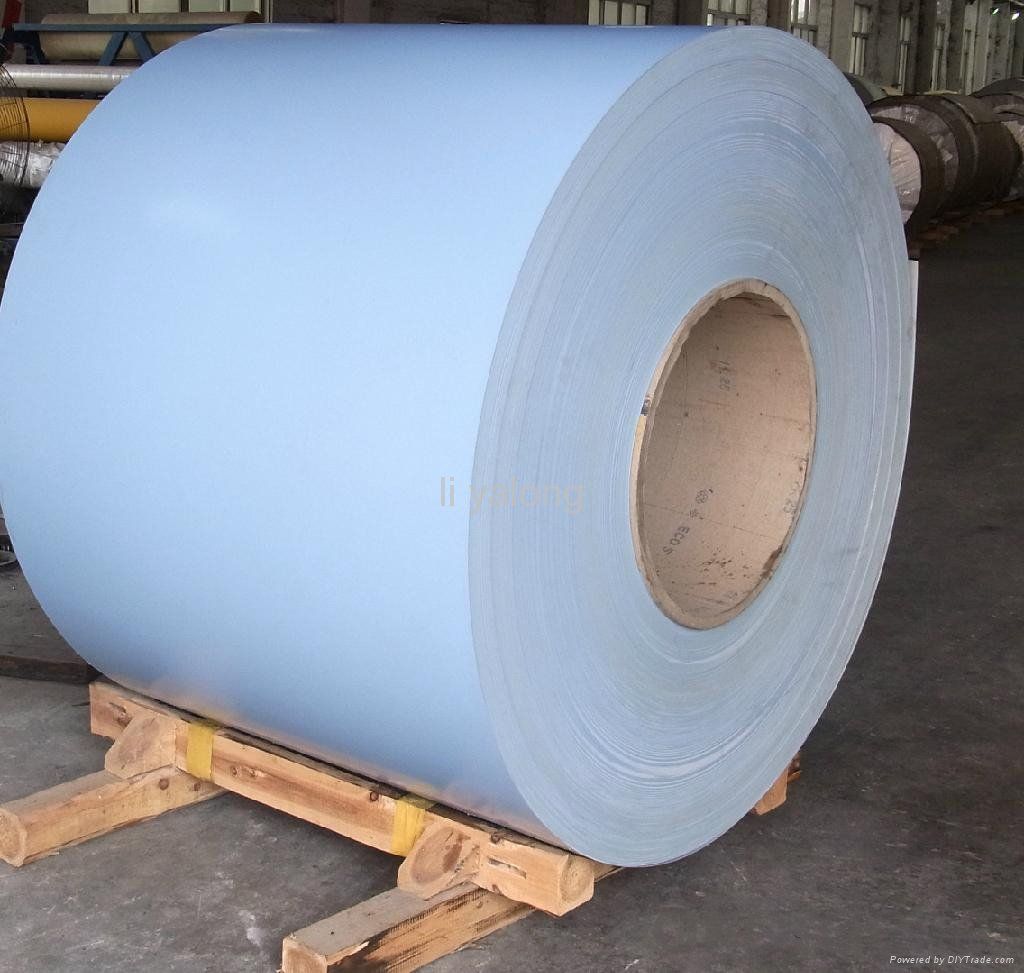
PE and PVDF Painting
Polyester Coatings (PE)
PE (polyester) coatings exhibit an excellent combination of hardness, flexibility, flow, appearance, and superior resistance to dirt retention in indoor and outdoor applications. These coatings are highly resistant to abrasion, metal marking, staining, and marring, and require minimal maintenance. Glazetech uses polyester paints which provide excellent colour and gloss retention properties.
Polyvinylidene Fluoride Coatings (PVDF)
PVDF (polyvinylidene fluoride) is a chemical resistant thick film barrier coating commonly used in architectural applications where both excellent appearance and substrate protection must be maintained over a long period of time. This coating is unaffected by most chemicals and solvents and has excellent wear and abrasion resistance. PVDF also has a high dielectric strength, excellent resistance to weathering and the ability to self extinguish.
Application
Widely used in manufacturing of products as well as other industrial applications like:
Products Materials: PP cap stock, the traffic sign, air-conditioner heat and exchangers, food container, household foil, pharmaceutical packing, cigarettes packing etc.
Building Materials: aluminum curtain wall base plate, ACP, aluminum, ceilings, aluminum sheets, honeycomb panels and aluminum roofing, lighting decoration, household electrical appliances, food package (such as pop can cover & ring-pull), furniture ect.
- Q: What are the production processes of aluminum coil and what are the functions of various industrial furnaces in the production of aluminum? The more detailed, the better. Thank you! Points!
- General steps are as follows: melting - hot rolling - cold rolling - annealing – shearing – straightening – punching
- Q: Are aluminum coils suitable for solar reflectors?
- Indeed, solar reflectors can indeed be made using aluminum coils. Aluminum, being highly reflective and durable, is extensively employed as a material for solar reflectors. Its reflective surface effectively redirects sunlight towards the intended destination, be it a solar panel or collector. Moreover, the lightweight and malleable nature of aluminum coils make them perfect for crafting curved or angled reflector surfaces. The reflective coating on these coils is also capable of enduring harsh weather conditions, ensuring long-lasting functionality. All in all, aluminum coils are an exceptional option for solar reflectors, given their reflectivity, durability, and adaptability.
- Q: This question asks for a comparison between steel wires and other materials when used in coilings, highlighting the pros and cons of steel wires.
- <p>The advantages of using steel wires for coilings include high tensile strength, durability, and resistance to corrosion. Steel wires are also cost-effective and widely available. They offer excellent fatigue resistance, making them suitable for applications requiring repeated coiling and uncoiling. Disadvantages include higher weight compared to some alternatives, which can be a concern in certain applications. Steel wires can also be prone to rust if not properly treated, and they may not be as flexible as some other materials, potentially leading to difficulties in handling or installation. Additionally, steel's magnetic properties can be a disadvantage in environments where non-magnetic materials are required.</p>
- Q: Can aluminum coils be used in marine applications?
- Marine applications can indeed utilize aluminum coils. The popularity of aluminum in this field can be attributed to its remarkable resistance to corrosion, lightweight nature, and impressive strength-to-weight ratio. Boats, ships, and other marine structures are commonly constructed using aluminum due to these advantages. Specifically, aluminum coils are especially valuable in marine applications because they can be easily shaped and sized to fit different marine industry parts and components. Moreover, these coils possess the ability to endure harsh marine environments and exhibit exceptional resistance to corrosion caused by saltwater, a major concern in marine applications. All in all, the utilization of aluminum coils in marine applications is a dependable and efficient choice.
- Q: Are aluminum coils resistant to UV radiation?
- Yes, aluminum coils are generally resistant to UV radiation. Aluminum has a natural oxide layer that provides protection against UV rays, making it highly durable and suitable for outdoor applications.
- Q: What’s the loss rate per kg when processing aluminum coil to aluminum sheet?
- 6.5kg/piece
- Q: Can the 5-10cm thick paper sleeve inside the scrapped aluminum coil be sliced? Now we use knife which is much troublesome.
- You can use Long Men Rolling Mill to slice directly.
- Q: just wondering if you can weld aluminum pipe to a metal pipe for a cars exuast
- aluminum to steel? short answer No and you will end up with a lot of mess and splatter try J-B weld it's a product though it can be done with a certain process that I'm not familiar with I have seen the finished application but i think the aluminum is a different metal make up I have accidentally tried to weld the two together many times not realizing what the metals were use a magnet to test if its aluminum magnets wont stick to aluminum
- Q: What is the weight of an aluminum coil?
- The weight of an aluminum coil can vary depending on its size, thickness, and length. Therefore, it is not possible to provide a specific weight without additional information.
- Q: What are the typical lead times for aluminum coil orders?
- The typical lead times for aluminum coil orders can vary depending on several factors. Generally, lead times for standard aluminum coil orders range from a few weeks to a few months. These lead times are influenced by factors such as the size and complexity of the order, the availability of raw materials, the production capacity of the supplier, and any specific customization requirements. It is important to note that lead times may be longer for larger or more specialized orders, especially if they require additional processing or finishing. Additionally, external factors such as transportation and logistics can also impact lead times. It is always recommended to communicate with the supplier directly to get an accurate estimate of the lead time for a specific aluminum coil order.
Send your message to us
RAL 9016 PE 18 Micros Coated Aluminum Coils Inc Tampa FL
- Loading Port:
- Tianjin
- Payment Terms:
- TT OR LC
- Min Order Qty:
- 2 m.t.
- Supply Capability:
- 40000 m.t./month
OKorder Service Pledge
OKorder Financial Service
Similar products
Hot products
Hot Searches
Related keywords









